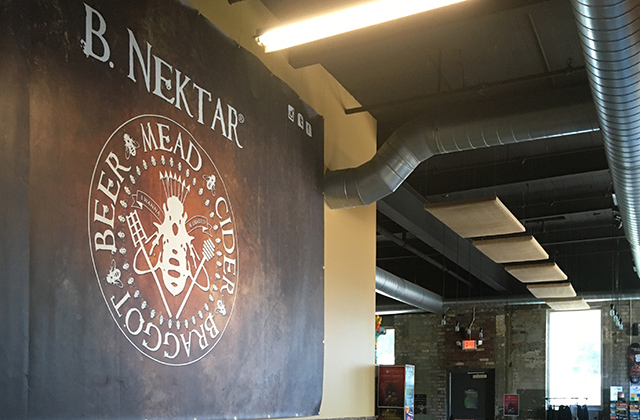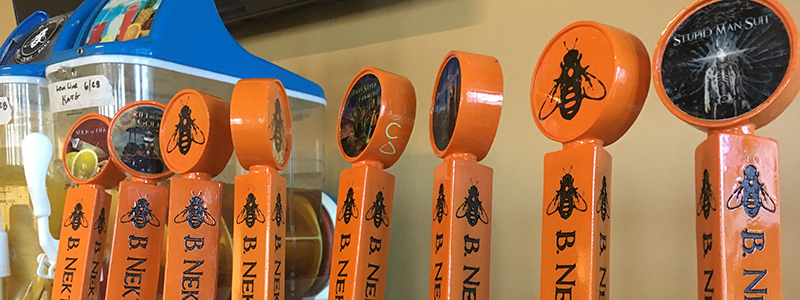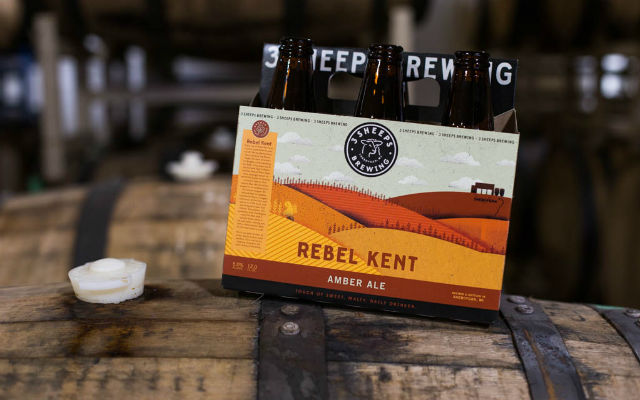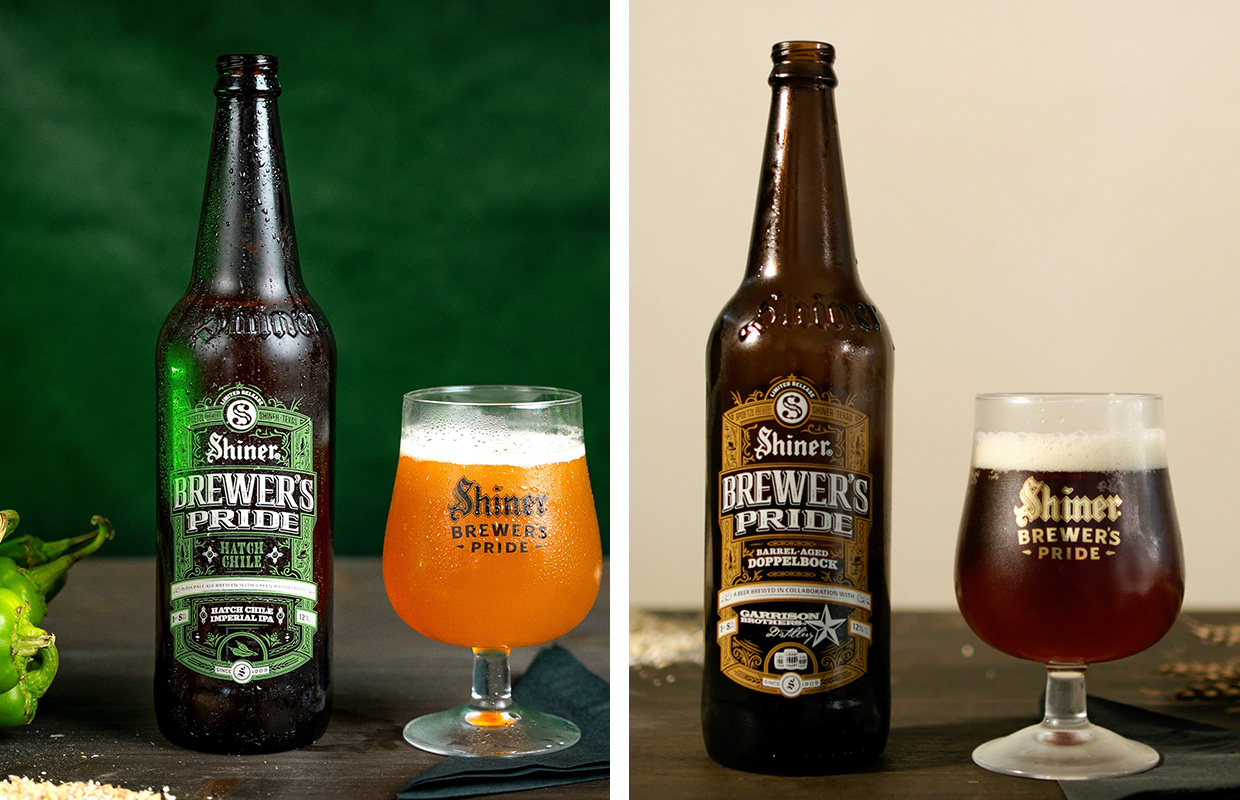
Brad Dahlhofer sees the mead industry in the U.S. much like the craft beer industry was more than 30 years ago. It’s there, it’s just not THERE yet.
“We are the little brother to the craft beer industry and we look up to them and we are proud of what they have been able to do,” said Dahlhofer, who is a founder and CEO of B. Nektar Meadery in Ferndale, Michigan. The meadery also makes cider and some beer in house for its taproom in the Detroit suburb. “We want to do something like them, but the sugars are totally different. It’s a different type of raw material that doesn’t respond the same way it does for beer to yeast. So there are all kinds of technical challenges too.”
Just like grains, meaderies can mix honey at different proportions and different flavors come from all these honeys as well. Some are dark honey like roasted barely, while crystal malts are sweet and then basic grains have that biscuit, bread character.
“Honey has those same aspects,” Dahlhofer said. “Not in flavoring profiles, but in their own way they are just as diverse. By law we can basically mix anything to that honey except grains to be creative. We are bound by the government that way. There are so many adjuncts allowed in brewing, but that’s how you get into the line of beer versus malted beverage. I mean, is honey a better adjunct than corn syrup?”
Those legal hurdles is what caused Justin Clark, the COO of Cigar City Brewing and co-founder of Cigar City Cider and Mead, to have to create an entirely different building when his brewery wanted to get into the mead-making business. Clark said he had to get licensed separately as a winery, and because they are separate businesses they have a completely separate facility in Ybor City, Florida, about six miles east of the brewery in Tampa.

“The taxes are more than in beer,” Clark explained, adding that the brewery didn’t have to do much in wholesale shifts.
“They wouldn’t have to be, we just have some great wholesale partners,” he added. “The one good thing with cider and mead, if something happened and a relationship soured with a wholesaler you can move to someone else much easier than with beer.”
Clark did note that although Florida franchise laws are very strict for beer, laws do vary from state to state.
The laws and loopholes did account for why Dahlhofer is limited in beer brewing at B. Nektar. The meadery, which started in a small warehouse and eventually has grown in the location to include larger warehouses around them, opened in 2008 on National Mead Day and is now the largest in the country by volume at about 3,500 barrels per year. They also work on beer recipes for Braggots and also for small batches available at the meadery’s taproom. But beer is not a revenue source, more of a creative outlet said Dahlhofer.
Craft alcohol in general has been on the rise and B. Nektar and Cigar City have been able to capitalize on that. Having consumers that are beer drinkers, but also are receptive to other types of drinks has been a key.
“I think yes there most definitely are crossover consumers,” Clark said. “Mead is legally classified as wine and wine geeks are usually in the mindset it has to have a grape to be good. The beer geek experiments much more and mead is accepted. A lot of the uber beer geeks that are our customer at Cigar City Cider and Mead are also customers at Cigar City Brewing.”
Dahlhofer calls Mead ‘an affordable luxury” and he says it shows in the consumers that come to the taproom.
“It’s people with more disposable income,” he said. “Honey and how it comes to be — that was an unintended pun – is more expensive. Making alcohol doesn’t require expensive sugar. You can produce a six percent ABV mead and compare it to a six percent beer and if all other things relatively equal, the mead is always going to be far more expensive than the beer.
“You can make a delicious beer very very cheap. It’s just good quality ingredients, but that will pale in comparison to honey.”
Dahlhofer agrees that there are people that just drink mead but he finds most mead drinkers are the omnivores of craft.
“I’m the same way. I like ciders and beers and mead and liquor,” he said. “People who have an affection for all things food and beverage will naturally be a consumer and fan of mead. Mead doesn’t have to represent one thing. It’s not just super syrupy, dessert wine. It can be as dry as a cider. The palate can perceive mead differently. They can be all over the place.”
So how does the mead market grow? Dahlhofer said it will have to be organic and it will take time.
The cost, along with consumer interest in a market can limit how much a meadery can grow.
“If you open a store in the desert, you are only going to get so much drive by traffic,” Dahlhofer summed up. “Us being in metro Detroit, we are in the middle of all the infrastructure of the Midwest.”
Yet B. Nektar exports outside of Detroit to create growth as products are available in half the states along with shipping to Europe, Singapore, Hong Kong and Thailand.
“We realized we weren’t going to grow just in the city or even the state of Michigan, we had to go outside and expand,” he said. “I don’t know how big the market is [overseas] yet, but there are expats working there and there are travelers to these areas that we can get these craft beer type drinkers out in these deserts.”
Dahlhofer doesn’t believe that many smaller breweries can tackle the effort because of licensing, but it’s doable. But the passion has to be there.
“It continues to grow, and we continue to take market share,” added Clark. “I think [consumers] are looking for better, more flavorful products. They also want to support their local community.”
That’s why Clark helped open the meadery for Cigar City. With local honey available but not local malt, the connection to being local is strong for the Florida meadery.
“We wanted to have the ability to make a 100-percent Florida product,” Clark said. “We have access to lots of great honey so with mead we can pull it off. With Cigar City Cider & Mead we [can] make some products with local ingredients.”
Right now there are a few hundred meaderies in the US, but Dahlhofer believe that there could be as many as 500 soon.
“You see a mix of high alcohol, Viking-type meaderies and then you see those that are opening up with lower levels, ones that want to can and it will be their bread and butter,” he said. “That’s the cool thing — I am watching the mead industry grow as if it was the early 80s, late 70s of the craft beer business. There is more information out there now than ever before and I think we are are our own customers. We may find that the meads we want to drink are not out there, so we want to make our own variation of something that isn’t out there. Our own badge of individuality.”






1 Trackback / Pingback